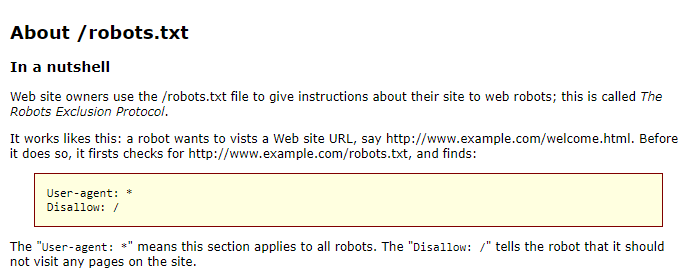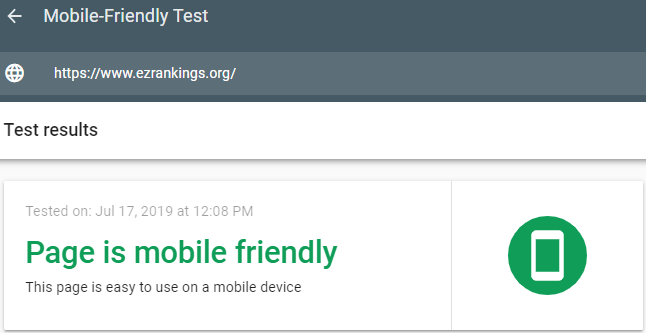Complete Technical SEO Audit Checklist for 2025

You have done everything possible under the Earth including adopting a powerful SEO strategy to make your website a winner with search engines but to your disappointment, the desired traffic is still not moving to your site. This should be a cause of great concern and plenty of sleepless nights. The first and foremost thing to do is to go in for a detailed technical SEO audit.
What is a Technical SEO Audit?
A technical SEO audit is like a report card that assesses or evaluates your website on all relevant aspects that affect its visibility to search engines. SEO audits can be technical and non-technical in nature.

The technical SEO is more to do with external factors that are not part of your content or links on your website. It has more do with the specific guidelines of a search engine or the algorithm that determines the indexation and the crawling factors. It also has something to do with the end-user experience. Technical SEO Audit hence is concerned with checking and cross-checking factors related to visibility, indexation, crawling and user experience for a website. It is essential thoroughly because it is perhaps the only way you would get to know the real technical reason behind the underperformance of your site vis-à-vis a competitor’s. It is important
to identify and know where technically your website lags and is inefficient so that the gaps can be fine-tuned and addressed effectively.
Broadly speaking the steps can be collated as below: –
| S. No | Quick SEO Audit Steps |
|---|---|
| 1 | First, check for the issues that are affecting the site’s performance big-time. |
| 2 | Get on with the analysis of the backlinks |
| 3 | Discover on-site problems that are easy to fix. |
| 4 | Do a quick content analysis |
The technical SEO audit does not take days and weeks – it should typically get over in a few hours. Often the frequent question that is asked is how often the audit should be done – experts are of the opinion that a full audit should be typically done once in three months whereas a sub-audit or a mini audit can be done once a month.
Here are the requisite steps and ways to handle a technical SEO audit of your website: –
| S. No | Technical SEO Audit Checklist |
|---|---|
| 1 | Check Header Status |
| 2 | Google Indexing & Cache of Pages |
| 3 | Broken Links Check |
| 4 | Robots.Txt Creation/Analysis |
| 5 | HTML Site Map Creation |
| 6 | XML Sitemap/Analysis |
| 7 | Canonicalization |
| 8 | Website Usability Analysis |
| 9 | Footer Optimization |
| 10 | Breadcrumbs |
| 11 | Mobile Friendliness |
| 12 | Custom 404 Page |
| 13 | URL structure Analysis |
| 14 | Pagination Tags Analysis |
| 15 | Page Speed Analysis |
| 16 | Schema Markup |
| 17 | Html Code Analysis |
1. Check Header Status
 A credible website or URL should be able to return a status code 200 while a decent SEO redirect will come back with a 301 code. A 200 code indicates that the URL is browser friendly and that the browser was able to find the said URL with the server responding back with a quality page. However, there are certain discrepancies here too. Often a page does not exist and should come back with a 404 Page Not Found but it returns 200. This is a fault that needs to be cross-checked as part of the technical audit process and be fixed immediately. A header redirect of 310 should be used for moving a page or a site. The 302 redirect is a bad case resulting in loss of link juices. It is also important to check the 404-page redirect and resolve the issue by creating 301 redirects or creating the page that is missing.
A credible website or URL should be able to return a status code 200 while a decent SEO redirect will come back with a 301 code. A 200 code indicates that the URL is browser friendly and that the browser was able to find the said URL with the server responding back with a quality page. However, there are certain discrepancies here too. Often a page does not exist and should come back with a 404 Page Not Found but it returns 200. This is a fault that needs to be cross-checked as part of the technical audit process and be fixed immediately. A header redirect of 310 should be used for moving a page or a site. The 302 redirect is a bad case resulting in loss of link juices. It is also important to check the 404-page redirect and resolve the issue by creating 301 redirects or creating the page that is missing.
2. Google Indexing & Cache of Pages

Next check for whether Google is indexing your site or not. Remember in case your site is not indexed the search engine will never be able to rank your site. In order to check the site index on Google, you need to go to Google Search console. Under the Google Index sub-category, you will get to see the index status of your site. The number of pages that are indexed will show up. If, however, it shows zero or doesn’t show any result that means your site is not indexed meaning that the Google search engine cannot crawl your page. You need to check the site’s header, or the server access files to confirm the reason.
It is important to remember here that if the indexing is not happening, Google crawler can’ create a cached version of your website.
3. Broken Links Check

In order to check for a broken link, you would need to go to Site Explorer. Go to the Pages option, click on Best by Links and search by a 404 filter. All the pages that show up here are broken links means that when you click on the link it shows a 404 error instead of taking you to the concerned page. The presence of broken links can have a negative impression on the search engine and the ranking.
4. Robots.Txt Creation/Analysis

The Robots.Txt file or protocol instructs a search engine or a web robot on the pages that it can crawl on your site and index and the ones that it cannot. The Robots.Txt file will always exist at the root of the domain. If the site has low-quality parts that you want to prevent the search engine from crawling use this text file. Google as such suggests using this file only when there server related or crawl-related efficiency issues.
5. HTML Site Map Creation

An HTML sitemap helps the end-users and visitors navigate through your website easily. Creating a manual HTML sitemap or HTML page sitemap using Google sitemap generator is an important step that enables visitors to navigate deep into the website and hence its presence on the site helps gain rank in the search engine page result.
6. XML Sitemap/Analysis

XML sitemaps are basically used to index the links present on your site by the search engine crawlers. The Extensible Markup Language or XML sitemap gives information to the search engine about the different URLs that are there on the site. The presence of XML sitemap helps invite a search engine to crawl the listed URLs and index them.
You can generate an XML sitemap for your website through various tools available online. Check out here what Google said on Sitemap – https://support.google.com/webmasters/answer/183668?hl=en
7. Canonicalization

Source – Moz
This is another important aspect of SEO. A canonical tag is meant to inform the search engine to ignore the duplicate or similar content that appear on different pages and to treat a page or URL as the master page.
8. Website Usability Analysis

As per Google, SEO and Website Usability must go together and websites must be made to enhance the user experience. To make your site more valuable you need to focus on the content of the page, focus on the language being used and optimize it and do away with the dead links.
9. Footer Optimization

Another great way to shoot up your SEO is by optimizing the footer. Links that can direct your visitors to another page on your website should be added to the footer. Since more links automatically mean a better rank on search engines it is essential to use the footer to add links and considered extremely useful for creating mobile-friendly sites.
10. Breadcrumbs

This is another easy way of facilitating the visitor to navigate your site which is why the Google search engine is very fond of Breadcrumbs. Hence adding breadcrumbs should be an important part of your SEO strategy.
11. Mobile Friendliness

It is all about user experience and making your site more responsive. Mobile-friendliness is something that Google loves and if your website can provide an awesome experience to visitors from their mobiles, the chances of high ranking to your site is guaranteed. Click here to check the Mobile-Friendly Test of your website.
12. Custom 404 Page

Creating a custom 404 pages is prudent. This is because 404 is something that visitors will encounter on your site not entirely because of your fault. When they do so however it is better that they get a customized 404 page that has a touch of your brand to it. Doing so will boost your SEO rather than hurt it.
13. URL structure Analysis
The structure of the URL should be such that it is easy to

understand by the search engine as well as the end-user. Analyzing the structure of the URL and making it SEO friendly as per the latest guidelines from Google will make it more search engine friendly.
14. Pagination Tags Analysis

Source – Searchenginewatch
This needs to be done so that the search engine can comprehend the relationship between the paginated pages so that it does not get confused based on duplicate or similar content.
15. Page Speed Analysis

This is again something that is close to Google’s heart – the site speed. Sites with faster speed and lesser loading time are automatically preferred by Google algorithms vis-a-vis the slower ones. Check out Google Page Speed here.
16. Structured Data (Schema Tags)

Schema or structured data is meant to optimize your site for search engine ranking. With schema on your site, the search engine is empowered to get more informative results from your site for the user. You can check the schema tag via Structure Data Testing Tool.
17. Html Code Analysis

If the HTML coding and elements are up to the mark search engines can rank them better. From the title tag to the meta description tag, header tags, structured data help the search engine understand your site better and pick it up for higher ranks.
Conclusion
Once the technical SEO audit is done with thoroughness you would start to notice the change in ranking in some time. Thought SEO audit can be a lengthy process and should be done on a continual basis, this is important before starting off any SEO services campaign.

